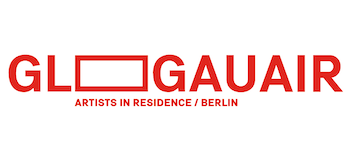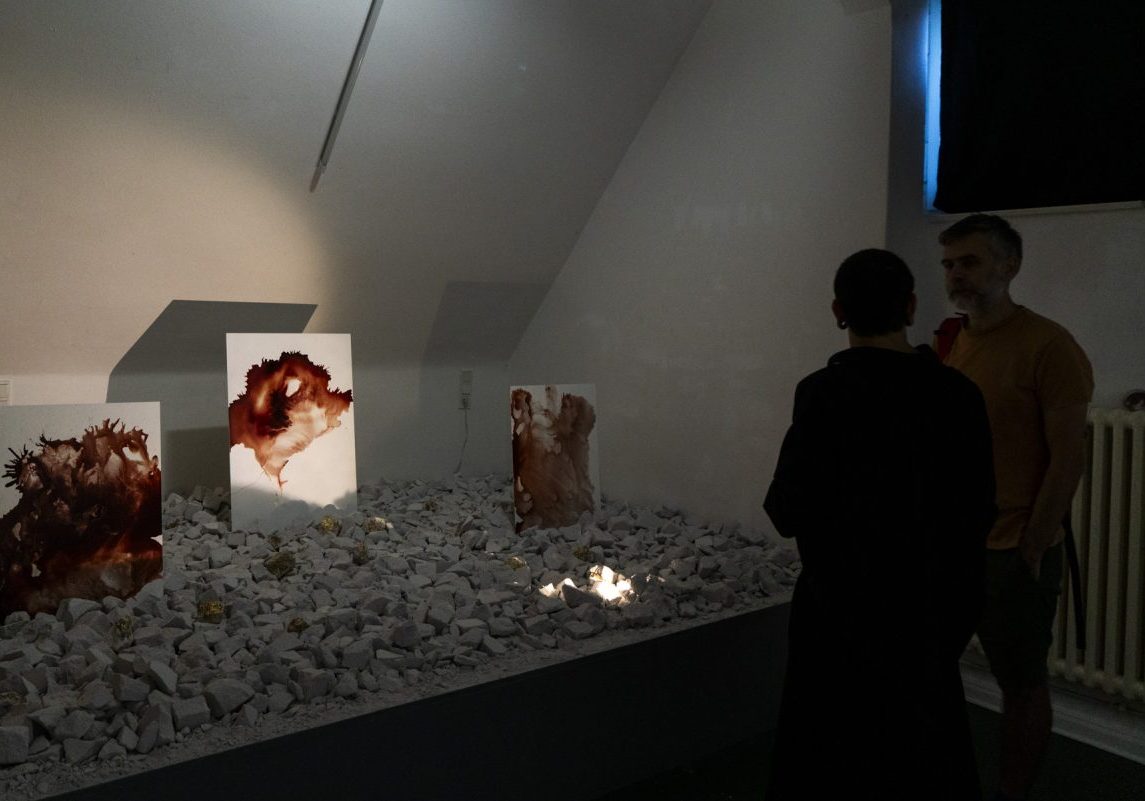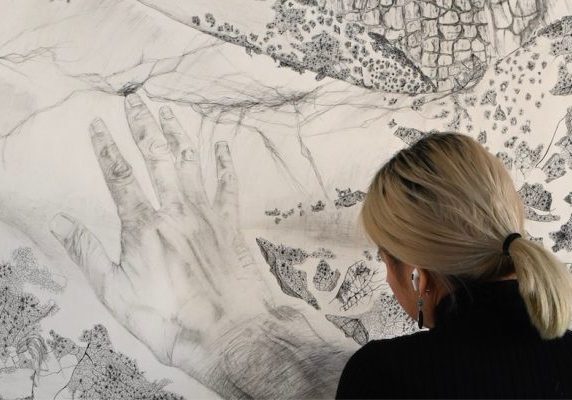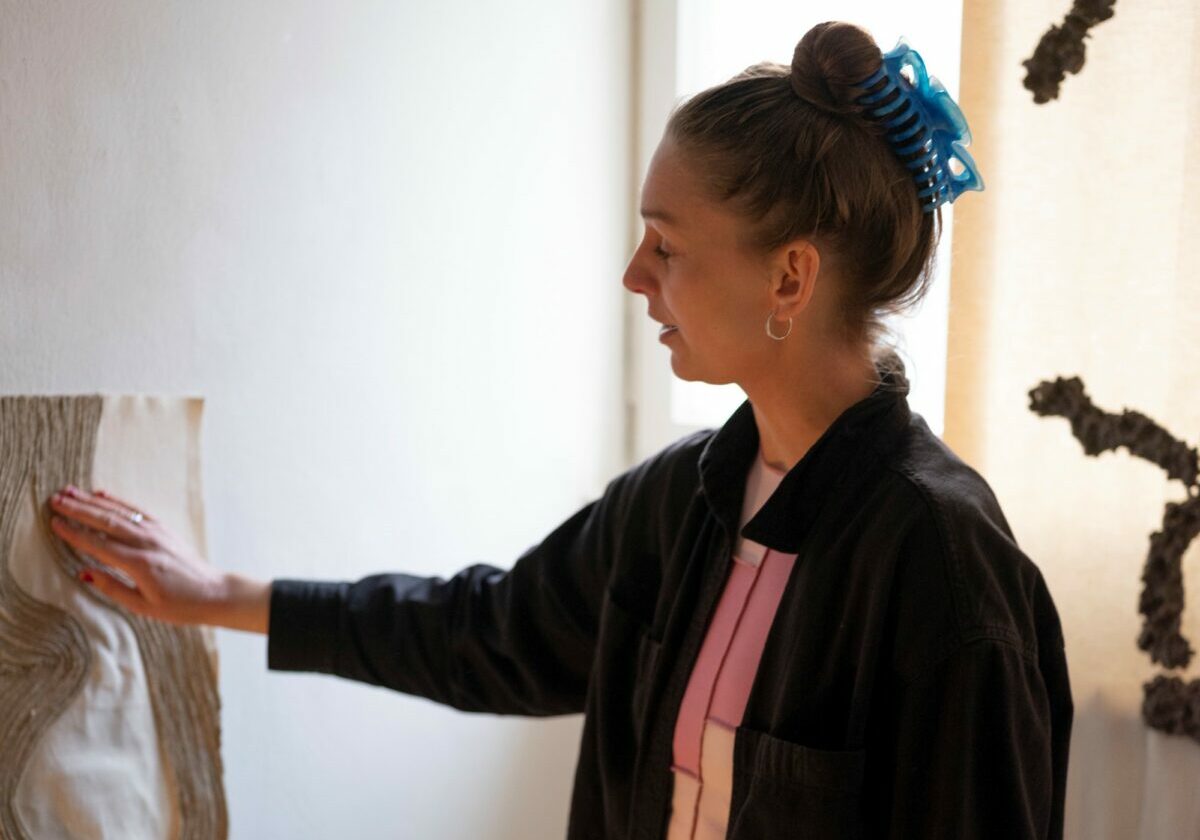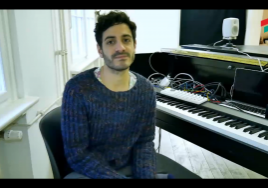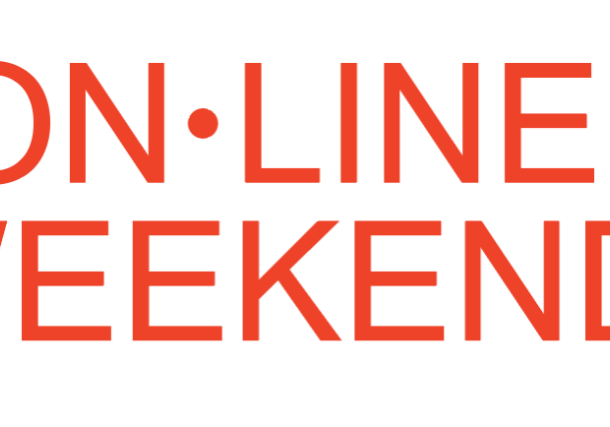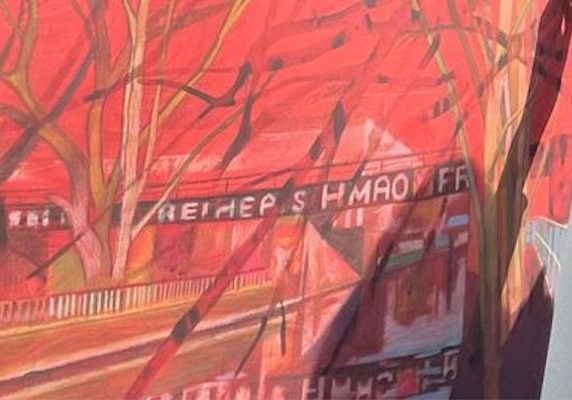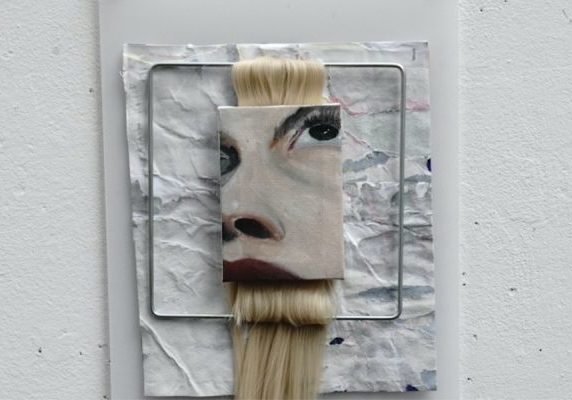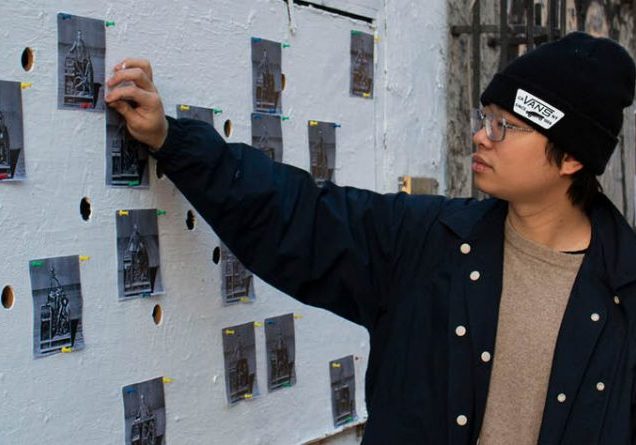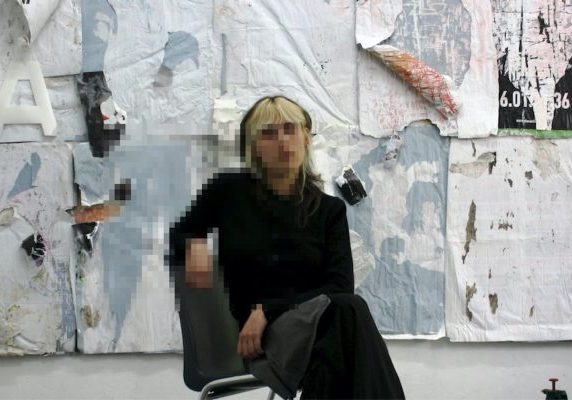Meet the Artist // Martin Winkler
Martin Winkler is a visual artist based in Göttingen, Leipzig, and Berlin. His work explores queerness, history, and pop culture through painting and installation. Drawing from journalism and travels, he recontextualizes overlooked narratives with humor and stark symbolism. Inspired by historical imagery and media tropes, his vibrant, simplified forms invite reflection on identity, trauma, and resilience, blending past and present in visually striking ways.
Can you tell me about your background and the project you are proposing for this three-month residency at GlogauAIR?
I’m a visual artist from East Germany and I have a background in painting and journalism, which I also studied. For my project at GlogauAIR I want to research the origin of homophobia and use my work to educate people—without relying on words. I also want to entertain them and share this message in a fun, humorous way.
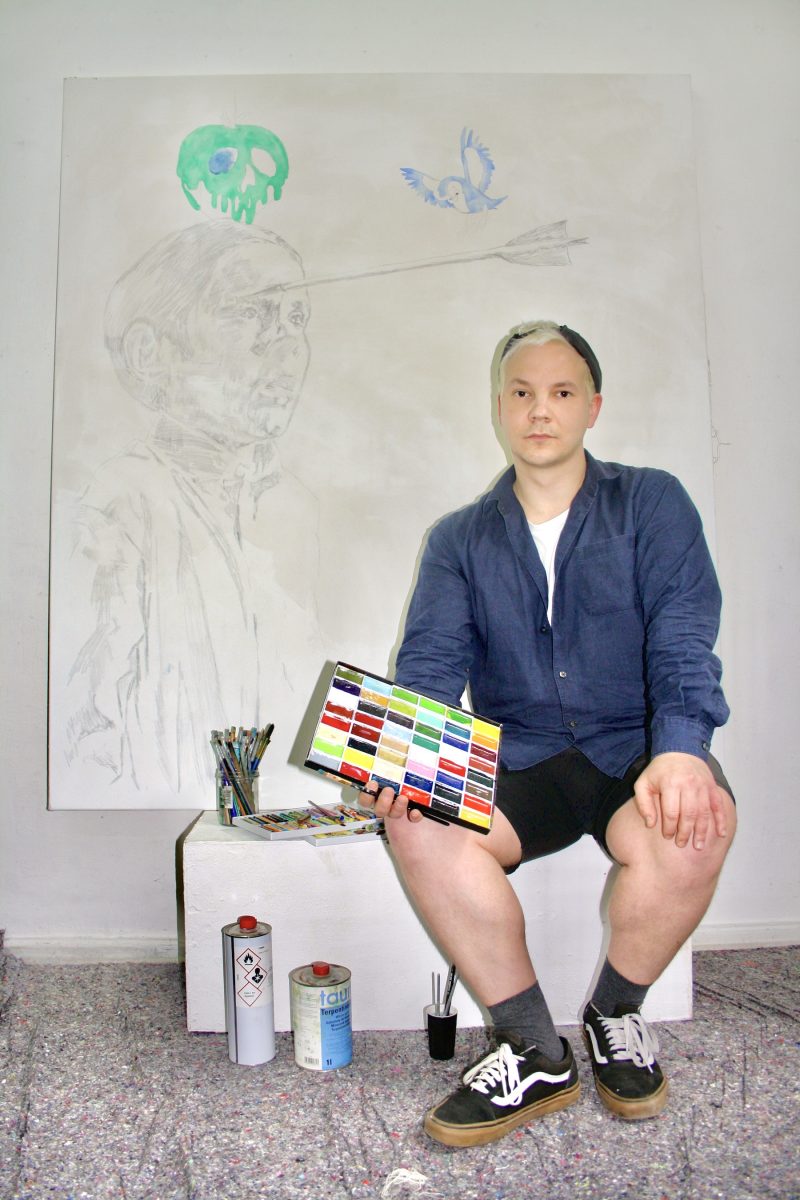
In your project, you mention that it explores gay pop culture. Gay and queer pop art often uses humor as a tool for subversion and resistance. What role does humor play in your project?
Using humor is always a good method in dark times, but also to show people a mirror. Queer culture has always used satire or camp to change the position of who’s making fun of who. So, I think humor is a nice channel to build up a conversation and also open up topics. For me, personally, it’s very important. I’m doing it to have fun by myself and when it’s done, I will share it with others. I notice that people also do enjoy it in a certain way, so I think humor is a very instinctive thing.
How does your personal experience influence the way you approach discrimination from an artistic and emotional perspective?
I spent my childhood in the countryside in a very right-wing and conservative area, so I’ve always felt like something is off and that I didn’t fit in the way people want me to. But as I got older, I found myself in this mindset of ‘I want to make art, but I need money to do it,’ which led me to push myself so hard that I ended up burning out. It was a really tough experience.
I noticed that discrimination in my childhood, but also growing older, that’s the thing that I want to communicate because I think the biggest problem these days is the lack of empathy for each other, and I think through colour and symbols, people can find a trigger. I can open up a channel that says “oh that’s pretty, that’s fun”, but then also make the viewer aware of being more sensitive, and to listen to each other, and be there for each other, and have empathy.
For my project, from the perspective of switching generations and being queer and being one of the first generations getting older being queer, because everyone thinks about parties, cocktails and sex, but nobody’s talking about how to age in dignity. So, I’m really excited about that, growing older but also of what will come out of my work and how much I can leave the trauma behind but also bring people together, so they can understand like “oh wow, we should listen more instead of always seeking competition“.
So, gay pop culture is often celebrated for its vibrant and festive aesthetic, but it can also conceal deeper layers of pain and marginalization. How do you navigate that duality in your work?
I grew up next to a church that had a graveyard and the house of the pastor. So growing up next to a graveyard, and being out at night -especially in autumn and winter when it’s dark- we weren’t many children in the village but I remember that there were always these funny storytelling things like: “let’s go in the graveyard and go through the graves” and think how people could have died, and I don’t know, coming up with stories which is still a strong part of my work, storytelling and working with strong symbolic images.
At some point, I reached a place where I was a bit annoyed that the medium that I work with was so flat. I wanted to make it multi-dimension to also step into it.I wanted to work more on installation than painting, which brings us to my project. It’s going to be a life-size horse, but also loose linen hanging from the ceiling, so the reference is Raoul Dufy’s “La Fée Electricité” which is the history of electricity, but when you see it, it’s like rainbow colors and easy shapes, you can really enter the painting which was super inspiring. I wanted to break this whole traditional idea of painting because I don’t think that I work traditionally, instead more intuitively.
I found myself not too long ago thinking that Christopher Street Day is always colourful, a party, drugs, I don’t know. But later, I figured out on a trip to New York, that it’s based on a demonstration, a riot, and I was a bit embarrassed that it took me so long to understand that. I think humor, grief, and all that stuff goes hand in hand, and it’s a strong channel to communicate a message if you just communicate it in a sad way. There’s already so much sadness, so I want to change the way the communication is functioning in a way of making it entertaining, and not sadder than it is already, so I think it goes hand in hand.
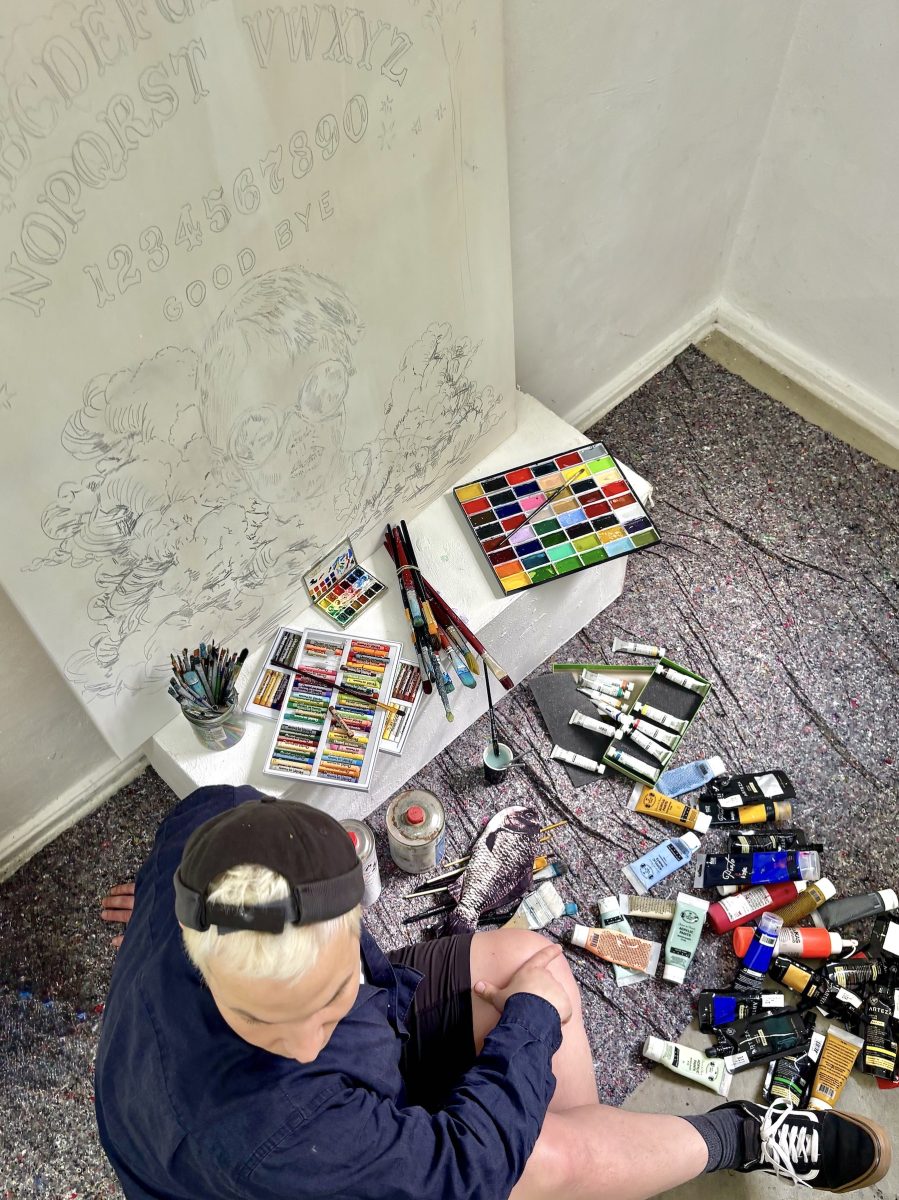
I was looking at your studio and wanted to ask you about all the new pieces that you are working on right now.
One night I found this big topic of “outsider art” in combination with gay artists. Later, I discovered the work of artists from the past and through this whole aesthetic I was really into, this whole magical world connected with fairy tales and storytelling that I really dived in deeper. So, it’s going to be part of the window, and partially also in the showcase. There will be a lot of bones, rusty nails and teeth.
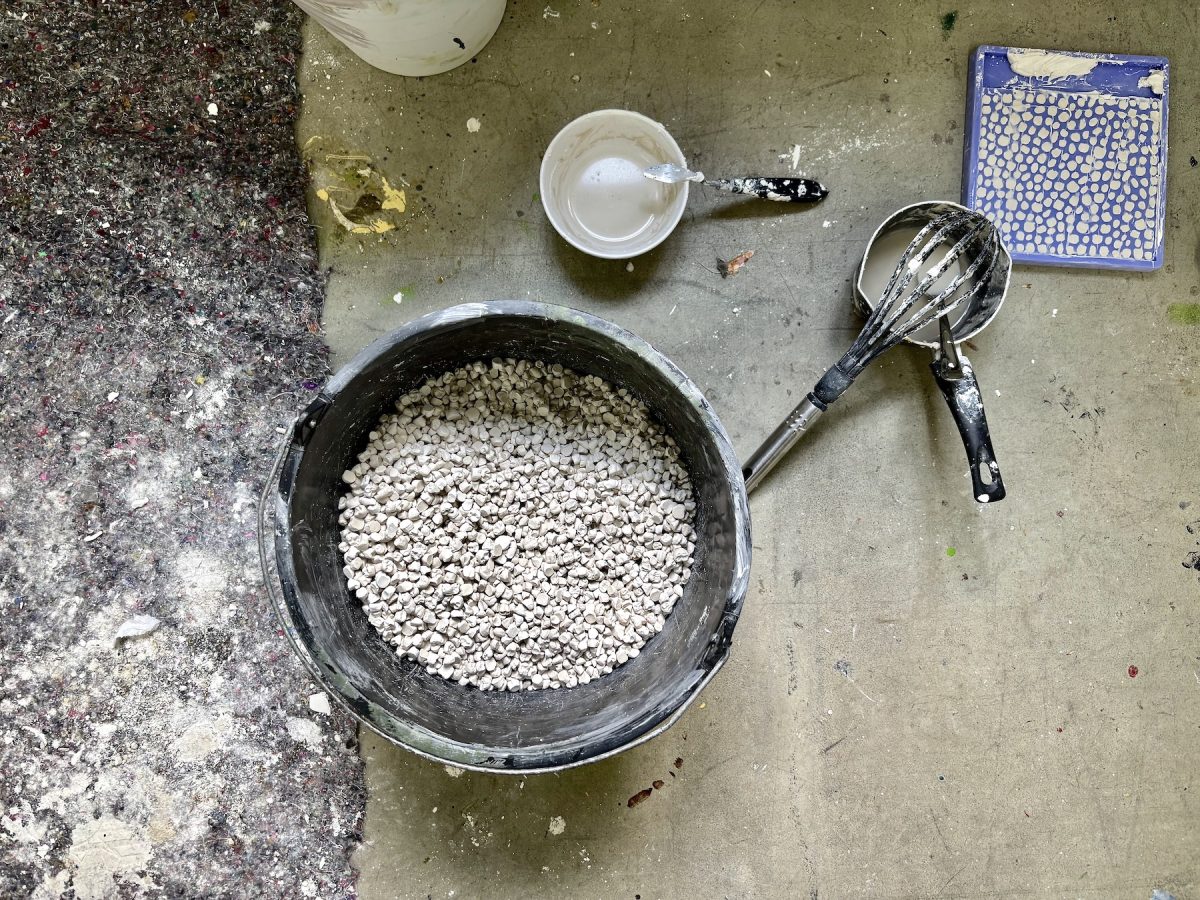
This takes me to the graveyard that we spoke about before.
Yeah, you know, the things that trigger bad feelings. Like bones and teeth, they’re built up in layers, like a collage kind of thing, so for me they start to be less scary and more exciting because it’s such an interesting material, it’s like the hardest material you have in your body. I want to trigger the bad things on the spectrum but in a very decorative way, and this whole occult-magic art is pretty close to that, like voodoo and all that stuff.
I think that the core of my work is to trigger instincts that we brutally got away from, because children now have so much empathy and have this uneducated logic in life, and the older you grow, the more you have to function in a certain way, and I want to bring people back to the mindset of following instincts and even if you don’t understand why you feel that way, dive in and try to figure that out.
